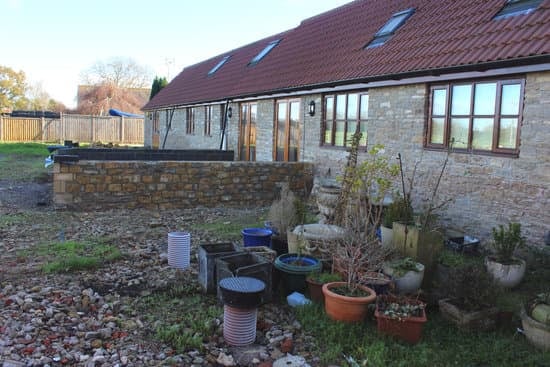Home improvement projects can be both exciting and daunting at the same time. Without proper planning and organization, it’s easy for things to become overwhelming and costly. That’s why scheduling home improvement projects and tracking costs is essential. In this article, we will explore the importance of scheduling home improvement projects and tracking costs, as well as provide helpful tips and strategies to help you stay on track and within budget.
When it comes to home improvement projects, having a clear schedule can make all the difference. By creating a structured plan, you can effectively prioritize tasks, allocate resources, and manage your time more efficiently. This not only helps reduce stress but also ensures that each project gets completed in a timely manner.
Additionally, tracking costs is vital for any home improvement venture. Keeping tabs on expenses allows you to have better control over your budget. It helps prevent overspending on unnecessary items or services and enables you to identify areas where cost-saving measures can be implemented.
In the following sections of this article, we will delve deeper into the benefits of scheduling home improvement projects and discuss various methods for creating project schedules that are realistic and adaptable. We will also explore tools and software that can aid in project management, as well as effective strategies for tracking costs and saving money.
So whether you’re planning a small renovation or a major remodel, stay tuned for valuable insights on how to schedule your home improvement projects and track costs effectively.
Benefits of scheduling home improvement projects
One of the major benefits of scheduling home improvement projects is that it helps reduce stress. Taking on multiple home improvement tasks can often be overwhelming, especially when trying to balance them with other responsibilities.
By creating a schedule, homeowners can break down their projects into manageable tasks and allocate specific timeframes for each one. This not only makes the entire process more organized but also reduces stress by providing a clear roadmap of what needs to be done and when.
In addition to reducing stress, scheduling home improvement projects also helps homeowners stay organized. A well-planned schedule ensures that all necessary tasks are accounted for and nothing falls through the cracks. This includes tasks such as obtaining permits, ordering materials, and coordinating with contractors or suppliers. By having a structured plan in place, homeowners can keep track of important details and deadlines, ensuring that the project progresses smoothly.
Furthermore, scheduling home improvement projects can lead to significant cost savings. When projects are planned out in advance, homeowners have the opportunity to research and compare prices for materials and services. This allows them to find cost-effective options and potentially negotiate better deals with contractors or suppliers. By taking the time to plan and allocate a budget for each task, homeowners can avoid overspending and make informed decisions about where to invest their money.
| Benefits | Details |
|---|---|
| Reduce Stress | A well-structured schedule provides a clear roadmap of tasks, reducing overwhelm. |
| Stay Organized | Scheduling ensures all necessary tasks are accounted for and deadlines are met. |
| Save Money | Researching prices and allocating a budget helps homeowners find cost-effective options. |
Creating a home improvement project schedule
Creating a home improvement project schedule is an essential step in ensuring the success and efficiency of your projects. By prioritizing and categorizing tasks, you can effectively manage your time and resources, ultimately leading to a stress-free and organized home improvement experience. This section will provide you with a step-by-step guide on how to create a comprehensive project schedule.
The first step in creating your home improvement project schedule is to identify all the tasks that need to be completed. Start by making a list of everything you want to accomplish, such as painting the walls, installing new flooring, or renovating the bathroom. Once you have identified all the tasks, prioritize them based on importance and urgency. This will help you determine what needs to be done first and what can be saved for later.
After prioritizing the tasks, it is important to categorize them according to their nature. Grouping similar tasks together can help you allocate resources more efficiently. For example, if you have multiple painting tasks, categorize them under “Painting” so that you can purchase all the necessary supplies at once and minimize trips to the store.
Next, assign realistic deadlines for each task. Take into account the complexity of each task and any external factors that may impact its completion time. It is always better to give yourself some buffer time for unexpected delays or challenges that may arise during the process.
Once you have identified and categorized all your tasks with realistic deadlines, it’s time to visualize your project schedule. You can use a variety of tools such as spreadsheets or project management software to create a calendar-like representation of your schedule. This will allow you to see how each task fits within your overall timeline.
By following this step-by-step guide on creating a home improvement project schedule, you’ll be able to effectively prioritize and categorize tasks, allocate resources efficiently, and ensure timely completion of your projects. A well-planned schedule not only reduces stress but also helps you stay organized and on track throughout your home improvement journey.
Setting realistic timeframes
Setting realistic timeframes is crucial when it comes to scheduling home improvement projects. Estimating the duration of each project accurately allows homeowners to plan their timelines effectively and ensures that they can complete their projects on time. Additionally, allowing buffer time accounts for any unexpected delays or issues that may arise during the course of a project. Here are some tips for setting realistic timeframes:
- Break down the project into tasks: Before estimating the duration of a project, it is important to break it down into smaller tasks. This allows for a more accurate assessment of how long each task will take and helps in identifying dependencies between tasks.
- Research similar projects: If unsure about how long a particular task may take, it can be helpful to research similar projects or consult with professionals in the field. This can provide valuable insights into the typical timeframe required for certain tasks.
- Consider potential challenges: It is important to consider any potential challenges or obstacles that may arise during the course of a project. For example, if working on an older home, there may be unforeseen issues such as plumbing or electrical problems that could extend the project timeline.
- Allow buffer time: In order to account for unexpected delays or complications, it is advisable to build in buffer time into the project schedule. This ensures that even if there are unforeseen issues, there is still enough leeway to complete the project within the desired timeframe.
By following these tips and taking the time to carefully estimate the duration of each task, homeowners can set realistic timeframes and avoid unnecessary stress and frustration during their home improvement projects.
| Project Task | Estimated Duration (Days) |
|---|---|
| Bathroom Remodel | 14 |
| Kitchen Renovation | 30 |
| Painting Interiors | 7 |
| Flooring Installation | 3 |
| Landscaping | 10 |
Utilizing project management tools and software
Utilizing project management tools and software can greatly enhance the efficiency and success of your home improvement projects. These tools and apps provide a centralized platform for organizing tasks, tracking progress, and monitoring deadlines. By using these resources, homeowners can effectively manage their projects and ensure that everything is on schedule.
The Benefits of Project Management Tools
Project management tools offer numerous benefits when it comes to scheduling and tracking home improvement projects. Firstly, they provide a clear overview of all tasks and deadlines, allowing homeowners to stay organized and prioritize accordingly. With a visual representation of the project timeline, it becomes easier to allocate resources and understand dependencies between different tasks.
Moreover, these tools allow for collaboration between team members or contractors involved in the project. Through shared platforms with real-time updates, everyone can stay aligned on progress, communicate effectively, and address any issues or changes that arise during the project.
Popular Project Management Tools and Apps
There are various project management tools and apps available that cater specifically to home improvement projects. One popular option is Trello, which offers an intuitive interface for creating boards with lists of tasks and cards representing each task. This tool allows users to assign due dates, add attachments or checklists, comment on tasks, and move them across different stages as they progress.
Another widely utilized tool is Asana, which provides robust features such as task assignments, file sharing, calendar integration, and customizable dashboards. It enables users to break down larger projects into smaller subtasks while maintaining visibility over the entire project’s status.
project management software dedicated to construction industry
such as Procore and BuilderTrend offer specialized functionalities designed specifically for managing large-scale home improvement projects. These platforms provide features like contract management, document control for blueprints or permits, punch lists for quality control checks, time tracking for on-site laborers.
utilizing project management tools and software is crucial for effectively managing and tracking home improvement projects. These tools streamline the scheduling process, increase collaboration, and provide real-time progress monitoring. By implementing these tools into your project management workflow, you can ensure that your home improvement endeavors are completed on time and within budget.
Tracking costs
Creating a Budget
One of the most important aspects of tracking costs for home improvement projects is creating a budget. Before you begin any project, it is crucial to establish a budget and allocate funds accordingly. This will help you determine how much money you are willing to spend on each project and prevent overspending.
When creating your budget, make sure to consider all aspects of the project, including materials, labor costs, permits, and any additional expenses that may arise. It is also important to leave some room for unexpected costs or emergencies that may come up during the course of the project.
Organizing Receipts and Invoices
Another effective method for tracking costs is by organizing all receipts and invoices related to your home improvement projects. Keep track of every expense you incur during the project, no matter how small it may seem. Organize your receipts by category or project so that you can easily refer back to them when needed.
Having all your receipts in one place will not only help you stay organized but also provide an accurate record of your expenses. This is especially useful if you need to return any items or file for warranties in the future.
Utilizing Expense Tracking Apps
In today’s digital age, there are several expense tracking apps available that can greatly simplify the process of tracking costs for your home improvement projects. These apps allow you to input expenses as they occur and categorize them accordingly. Some apps even provide features such as built-in calculators or reminders for upcoming payments.
By utilizing these apps, you can easily monitor your spending in real-time and have a clear picture of where your money is going. Additionally, many expense tracking apps allow you to generate reports or export data, which can be helpful when reviewing your overall project budget or preparing tax documents.
Tracking costs for home improvement projects is crucial in order to stay within budget and ensure successful completion of your projects. By creating a budget, organizing receipts and invoices, and utilizing expense tracking apps, you can effectively keep track of your expenses and make informed decisions throughout the entire project. These methods will not only help you stay organized but also give you peace of mind knowing that you are in control of your finances.
Tips for saving money on home improvement projects
Saving money on home improvement projects is a common goal for many homeowners. By being mindful of costs and exploring budget-friendly alternatives, it is possible to achieve your desired results without breaking the bank. Here are some tips for saving money on home improvement projects:
- Research and compare prices: Before making any purchases or hiring contractors, it’s important to do thorough research and compare prices. Take the time to shop around, get multiple quotes, and read reviews to ensure you are getting the best deal possible.
- Consider DIY options: One of the most effective ways to save money on home improvement projects is by doing it yourself whenever possible. Simple tasks like painting or installing light fixtures can easily be done by homeowners with little to no experience. However, be sure not to take on more complex projects that may require professional expertise in order to avoid costly mistakes.
- Explore budget-friendly alternatives: Instead of completely replacing certain elements in your home, consider exploring budget-friendly alternatives. For example, instead of ripping out old kitchen cabinets and installing new ones, you can give them a fresh look by repainting or refacing them. Additionally, consider using materials that are cost-effective but still offer durability and aesthetic appeal.
- Plan strategically: Proper planning plays a crucial role in saving money on home improvement projects. Start by creating a detailed budget that includes all necessary expenses such as materials, labor costs, permits, and any additional fees. Stick to this budget as closely as possible throughout the project to avoid overspending.
- Reuse and repurpose: Another way to save money is by reusing or repurposing materials whenever feasible. For example, if you’re renovating your bathroom, consider salvaging items like faucets or mirrors that are still in good condition instead of purchasing new ones.
By implementing these tips for saving money on home improvement projects, you can successfully complete your projects while keeping costs under control. Remember that it’s important to strike a balance between affordability and quality, and always make decisions that align with your budget and personal preferences.
Communicating with contractors and suppliers
Effective communication with contractors and suppliers is crucial for ensuring smooth scheduling and cost tracking during home improvement projects. By maintaining open lines of communication, homeowners can avoid confusion, delays, and cost overruns. Here are some tips for effective communication with contractors and suppliers:
- Clearly articulate project requirements: Provide detailed instructions and specifications to contractors and suppliers to ensure everyone is on the same page. Clearly communicate your expectations, including project scope, timeline, and budget constraints.
- Regularly communicate progress updates: Keep in touch with contractors and suppliers throughout the project to stay informed about progress and address any concerns or issues that may arise. This helps to keep the project on track and allows for prompt action if adjustments need to be made.
- Use digital communication tools: Take advantage of technology to streamline communication. Email, messaging apps, and project management software can make it easier to share information, documents, and updates in real-time. It also provides a record of all communications for future reference.
- Schedule regular meetings or check-ins: Set up regular meetings or check-ins with contractors and suppliers to assess progress, address any questions or concerns they may have, discuss potential changes or adjustments to the schedule or budget, etc. These meetings help foster collaboration and keep all stakeholders informed.
- Maintain a professional yet amicable relationship: Foster a positive working relationship with your contractors and suppliers by being respectful, responsive, and considerate throughout the project. This encourages open communication and helps build trust between all parties involved.
By implementing these strategies for effective communication with contractors and suppliers, homeowners can ensure that their home improvement projects stay on track both in terms of scheduling and cost tracking. Clear communication helps prevent misunderstandings or miscommunications that could lead to delays or additional expenses.
Reviewing and adjusting the schedule
Regularly reviewing and adjusting the project schedule is a critical aspect of successfully managing home improvement projects. Unexpected changes, delays, and obstacles are bound to occur during any renovation or remodeling process. By regularly assessing and adapting the schedule, homeowners can effectively anticipate and address these challenges, minimizing their impact on the overall project.
One key reason for reviewing and adjusting the schedule is to account for unforeseen circumstances that may arise during the course of a project. For example, weather conditions or availability of certain materials may cause delays that were not initially anticipated.
By monitoring the progress of each task and comparing it with the projected timeline, homeowners can identify potential bottlenecks or areas where adjustments may be necessary. This allows them to make informed decisions about prioritizing tasks or allocating additional resources if needed.
In addition to unexpected changes, reviewing and adjusting the schedule also provides an opportunity to reevaluate project priorities and goals. As the renovation progresses, homeowners may gain new insights or develop new preferences that require modifications to the original plan.
By regularly assessing the schedule, they can assess whether adjustments need to be made in terms of task order, scope, or even contractors involved. This flexibility ensures that homeowners remain in control of their projects and can tailor them to their evolving needs.
Furthermore, regular review and adjustment of the schedule also promotes effective communication among all parties involved in the project. Homeowners can keep contractors, suppliers, and other stakeholders informed about any changes or updates to ensure everyone is on the same page. This helps minimize misunderstandings or conflicts that may arise from differing expectations or timelines.
Conclusion
In conclusion, scheduling home improvement projects and tracking costs are crucial steps for ensuring successful and stress-free renovations. By following a well-planned project schedule, homeowners can reduce stress, stay organized, and save money in the long run. Prioritizing tasks, setting realistic timeframes, utilizing project management tools and software, tracking expenses, and communicating effectively with contractors and suppliers are all key components of this process.
Having a detailed project schedule helps homeowners stay on track and prevents them from becoming overwhelmed with multiple tasks at once. It allows them to prioritize tasks based on importance and urgency, ensuring that the most critical projects are completed first. This not only helps maintain focus but also prevents costly mistakes or oversights.
Tracking costs is equally important as it allows homeowners to stay within budget. By keeping a close eye on expenses and regularly reviewing them, adjustments can be made if necessary to avoid any financial burdens. Additionally, tracking costs provides valuable insights into where money is being spent and enables homeowners to find budget-friendly alternatives or cost-saving strategies.
By implementing these strategies, homeowners can ensure successful home improvement projects. They will not only achieve their desired results but also save time and money in the process. So take the time to create a project schedule, track expenses diligently, communicate effectively with everyone involved, and make necessary adjustments along the way. With these strategies in place, you’ll be well-equipped to tackle your home improvement projects with confidence.
Frequently Asked Questions
How do you keep track of renovation costs?
Keeping track of renovation costs requires careful planning and organization. One effective way to do so is by creating a detailed budget before starting any home improvement project. Start by identifying all the necessary materials, labor costs, permits, and any other expenses that might be incurred.
Break down these costs into categories such as plumbing, electrical, or flooring, for instance. As the project progresses, it is essential to keep all receipts and invoices neatly organized in one place so that you can easily track the expenditures against the initial budget. Regularly updating your budget as new expenses arise will ensure that you stay on top of your renovation costs.
Is there an app to track renovation expenses?
Yes, there are several apps available that can help track renovation expenses conveniently. These apps are designed to simplify the process of managing home improvement budgets and record keeping. They generally offer features like expense tracking, receipt scanning, budgeting tools, and even calculators to help estimate project costs accurately.
Some popular options include apps like HomeZada, Renovations Budget Tracker, or Expensify. These apps allow you to input your expenses as you go along and provide visual representations of your spending patterns as well as reminders for upcoming payments or deadlines.
How do I set up a budget for home improvements?
Setting up a budget for home improvements starts with assessing your financial situation and determining how much you can reasonably spend on renovations without straining your finances excessively. Begin by making a list of all the desired improvements you’d like to make in order of priority while considering factors such as practicality and functionality versus aesthetics alone. Research the average costs associated with each renovation project and get multiple quotes from contractors if needed.
Once you have an idea of potential expenses involved in each improvement area, allocate a specific portion of your overall budget towards each category accordingly – this will ensure you prioritize spending appropriately within different segments of your home improvement plan. Remember to also set aside some contingency funds for unforeseen circumstances during the renovation process.

I’m thrilled to have you here as a part of the Remodeling Top community. This is where my journey as an architect and remodeling enthusiast intersects with your passion for transforming houses into dream homes.





